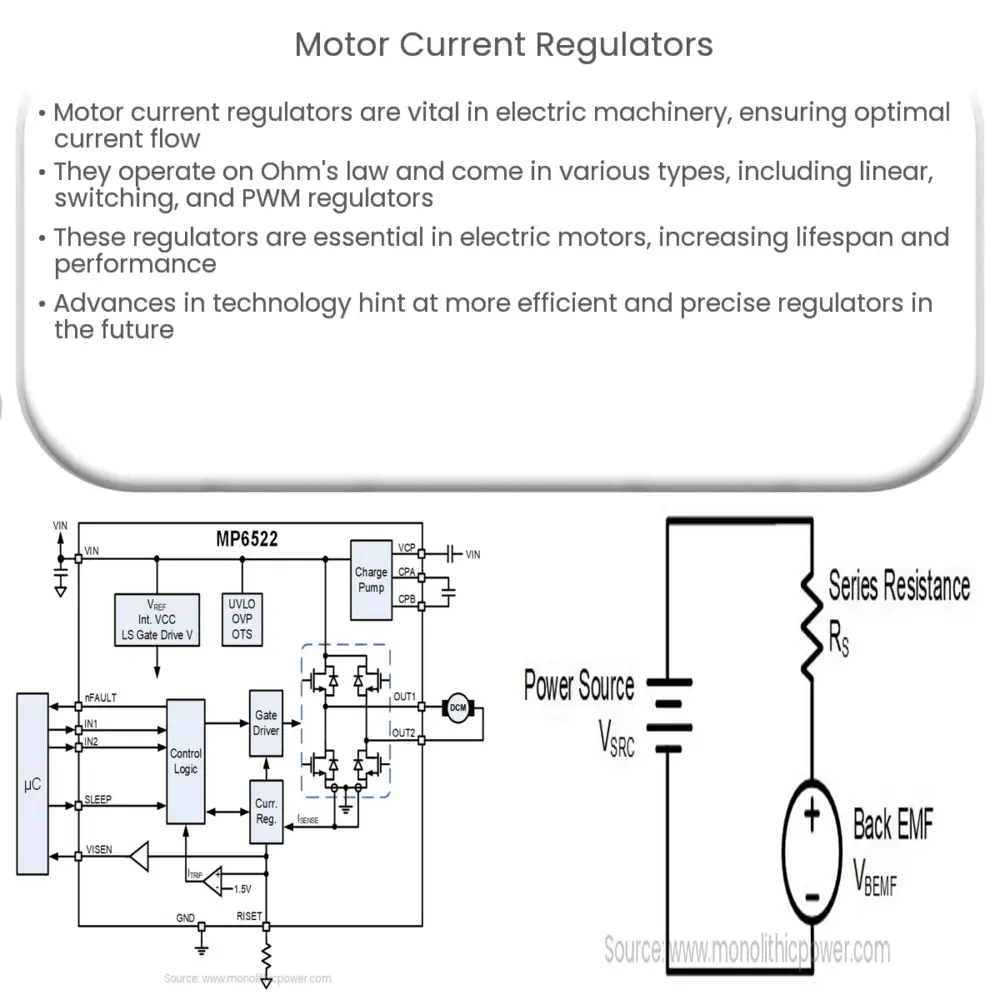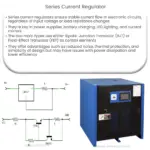Explore the importance of motor current regulators in electric machinery, their types, key applications, and future developments.

Introduction to Motor Current Regulators
Motor current regulators play a pivotal role in the world of electric machinery. They are designed to control and stabilize the flow of electric current in motor circuits, ensuring optimal and safe performance. By understanding the function and significance of these components, we can better appreciate their role in various industrial applications.
The Principle Behind Motor Current Regulation
The motor current regulator operates based on the principle of Ohm’s law, which states that the current passing through a conductor between two points is directly proportional to the voltage across the two points. Motor current regulators ensure that the current flowing through the motor remains within the permissible range, protecting the motor from damage due to overcurrent conditions.
Types of Motor Current Regulators
- Linear Regulators: These are the simplest form of motor current regulators. They employ linear elements to regulate the current. Although efficient for low power applications, they tend to be less energy efficient for high power systems due to considerable power loss in the form of heat.
- Switching Regulators: Also known as switched-mode power supplies (SMPS), these regulators use a high-frequency switch that turns on and off to control the flow of current. They are more efficient than linear regulators, especially for high power applications.
- PWM Regulators: Pulse Width Modulation (PWM) regulators adjust the duty cycle of a signal to control the current flow. They are typically used in applications where precise control is needed, such as in servo motors.
Importance of Motor Current Regulators
Motor current regulators are integral to the operation of electric motors. They ensure that the motor operates within its design specifications, thereby safeguarding it from potential damage. This extends the motor’s lifespan, enhances its performance, and reduces the risk of unplanned downtime.
Applications of Motor Current Regulators
Motor current regulators find usage in a wide array of applications. From household appliances like washing machines and refrigerators to industrial machinery, electric vehicles, and renewable energy systems, these regulators contribute significantly to their safe and efficient operation.
Motor Current Regulators in Industrial Applications
In industrial environments, motor current regulators are indispensable. They are commonly used in manufacturing lines, heavy machinery, and robotics. For instance, in robotics, precision is paramount. Current regulators enable precise movement control by ensuring the motors only receive the current they need for a specific task.
Motor Current Regulators in Electric Vehicles
Electric vehicles (EVs) represent another critical application for motor current regulators. EVs rely heavily on the smooth and efficient operation of their electric motors. The regulators control the flow of current to the motor, thereby optimizing the vehicle’s performance, battery life, and safety.
Motor Current Regulators in Renewable Energy Systems
Renewable energy systems, particularly solar and wind energy installations, also benefit from motor current regulators. These regulators help to manage the variable power outputs often associated with renewable sources, ensuring a stable and reliable supply of power to the motors in these systems.
Challenges and Future Developments
While motor current regulators have come a long way, there are still challenges to overcome. One key challenge is heat dissipation in high-power systems, especially for linear regulators. Additionally, as motors become more compact and energy-efficient, regulators will need to evolve in tandem to manage smaller, more precise current levels.
Looking ahead, advancements in semiconductor technology and materials science are expected to lead to more efficient and compact motor current regulators. Furthermore, the integration of advanced control algorithms and artificial intelligence could enable even more precise current regulation, ultimately driving the next wave of innovation in motor technology.
Conclusion
In conclusion, motor current regulators play a crucial role in the safe and efficient operation of electric motors. From simple household appliances to advanced electric vehicles and renewable energy systems, they ensure that the current flowing to motors is regulated and kept within safe limits. While challenges remain, ongoing advancements in technology promise exciting developments in the field of motor current regulation. As such, understanding the function and importance of these regulators is essential for anyone involved in electronics, engineering, or related fields.



